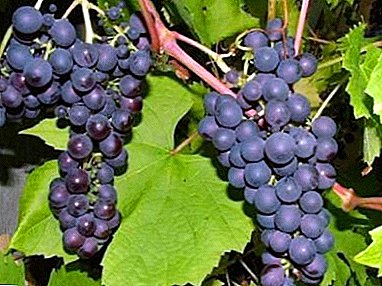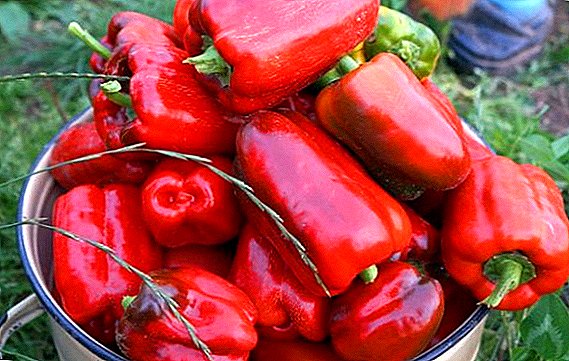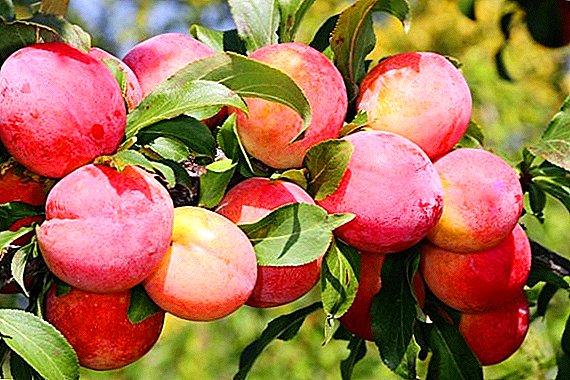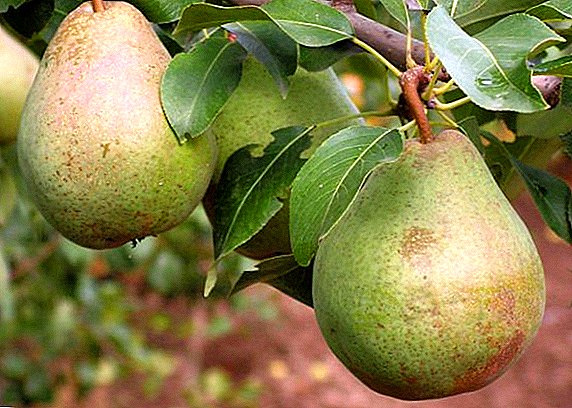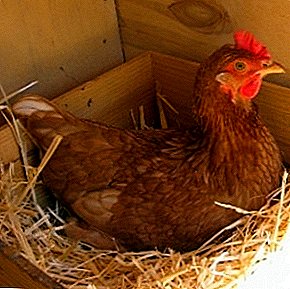
Egg breeding for many farmers is a stable, profitable business.
Summer residents and peasants breed hens to provide the family with fresh eggs. The high nutritional value of eggs provides a constant demand for this healthy product.
The productivity of laying hens depends on the conditions of detention, the completeness of the diet, the quality of the feed.
Many people are interested in the question: how to feed the chickens so that the egg-carrying capacity is stable throughout the whole year?
Pay attention to the recommendations regarding the diet, feeding mode of the hens, qualitative and quantitative composition of the feed.
Diet
For good egg production of chickens and high nutritional value of eggs, include certain types of feed in the chicken diet.
Mineral feed
 Provide layers:
Provide layers:
- calcium;
- phosphorus;
- chlorine;
- sodium;
- iron.
Preserve the strength of the shell.
Mineral feed is chalk, shells, limestone, feed phosphates, table salt. Grind them well. Mineral supplements are mixed with grain, added to wet mash.
Proteinaceous
 Protein - the building material for the body of chickens. Proteins provide feed of plant and animal origin.
Protein - the building material for the body of chickens. Proteins provide feed of plant and animal origin.
Vegetable proteins are found in:
- legumes;
- meal and cake;
- yeast;
- nettle flour.
Animal squirrels are contained in:
- whole and skimmed milk;
- cottage cheese;
- fish and meat-bone meal.
Vitamin
 Replenish the supply of vitamins, increase immunity and the percentage of preservation of chickens.
Replenish the supply of vitamins, increase immunity and the percentage of preservation of chickens.
Recommended:
- grated carrots;
- fresh greens in summer and dry hay in winter;
- tops;
- grass and pine flour.
Rich in carbohydrates
 This group of feed includes cereals and vegetables.
This group of feed includes cereals and vegetables.
Cereals:
- wheat;
- oats;
- barley;
- millet;
- sorghum;
- corn.
Experienced farmers recommend sprouting part of the grain. So in the cereals increases the content of vitamin E.
Vegetables
Vegetable crops:

- potatoes;
- roots.
This delicacy, to which all chickens are not indifferent - melons and gourds.
A high carbohydrate content is found in bran. They are added to the dry and wet feed mixture.
Norms
Approximate feeding rate for laying hens in the warm season:
- cereals - 50g;
- a mixture of cereals and their waste (barley, oats, bran) - 50g;
- vegetables (carrots, beets, swede) - 30g;
- crushed shells, chalk - 2g
- meat and bone meal, fish meal - 2g;
- meat waste, cake - up to 15g;
- table salt - 0.5 g.
In households, the ration of hens consists of mixtures of: grain, grass, kitchen waste, and products that are offered separately: cottage cheese, yogurt, vegetables, beans, potato scraps, pieces of melons and watermelons. Every day, birds should receive all types of feed.
Fish or meat flour is preferably partially replaced by earthworms. The ideal option is to breed them on your farm. Some owners give snail chickens. They are rich in proteins.
How to vary the diet? In the warm season, let the chickens free-range in the pen. They will be able to pinch grass, find worms, larvae, beetles. Be sure to scatter the eggshell, fresh grass, pieces of watermelon. The more diverse the feed, the higher the productivity of the hens.
Board: small gravel or river sand will help to improve digestion.
Mode for laying hens
 The egg production of the breed depends on how often the bird is fed. 150g of feed per layer per day will be sufficient. You can not overfeed the bird. Excessive weight also reduces egg production. Chickens, tossing at an empty trough - no good.
The egg production of the breed depends on how often the bird is fed. 150g of feed per layer per day will be sufficient. You can not overfeed the bird. Excessive weight also reduces egg production. Chickens, tossing at an empty trough - no good.
Most owners feed the bird in the morning and evening. If chickens have nowhere to walk and look for food on their own, provide three meals a day.
In the presence of a large area pen, you can feed the layers in the morning. In this case, you must be sure that in the open area chickens have something to profit.
Feeding in winter
 The basic rule - food in the cold should be abundant.
The basic rule - food in the cold should be abundant.
To keep egg production at a high enough level in winter, you will have to take care of the hens in the summer:
- dry the hay;
- stock up on coniferous and grass meal;
- harvest root vegetables and cabbage.
Feed the hens twice a day. Be sure to morning and evening feeding.
In the morning, let's warm soft food:
- wet mash;
- boiled potatoes;
- vegetable mix;
- food waste;
- fish broth;
- porridge;
- cottage cheese, skim milk.
Be sure to add vitamin feed, fish meal, chalk, shell dust, table salt, herbal mixtures to the wet mash.
 Chickens breed Hisex are the result of stubborn robots scientists. Read about what happened to them on our website.
Chickens breed Hisex are the result of stubborn robots scientists. Read about what happened to them on our website.On our site you can also find the rarest breeds of chickens, for example, Dominic chickens.
Evening ration:
 dry grain or dry grain mixtures with the addition of bran, corn waste, barley meal.
dry grain or dry grain mixtures with the addition of bran, corn waste, barley meal.
During the day, give chickens worms. Pamper them with cabbage leaves and grass hung on the walls of the chicken coop. In winter, there is a catastrophic lack of fresh greenery. Beets or pumpkins successfully replace green fodder.
Calcium deficiency is easily noticed. The egg shell becomes soft to the touch, thin and fragile. Perhaps you have a small date fish meal, chalk or meat-bone waste. Spread crushed chalk all over the coop. A chicken will eat it as long as necessary.
In winter, the role of germinated grain. Prepare it easy:
- corn or barley is soaked in warm water;
- in a warm room (from + 23 ° C to + 27 ° C), the grain is laid out and it must be kept wet;
- sprouts appear for 3-4 days;
- rich in protein and vitamins food ready.
How to increase egg production in winter? Perform yeast feed:
- Take 30 g of fresh, high-quality yeast. Dissolve them in 1.5 liters of warm water. This amount will enrich with vitamins 1 kg of flour feed;
- dissolve the yeast in water, mix with the flour mixture;
- soak up to 9 hours in heat.
After that add gruel to the wet mash. On 1 head it will take from 15 to 20 g of vitamin feed.
Approximate ration of feeding 1 hen hens in winter:

- grain - 50g;
- sour milk, whey - 100g;
- shells, chalk - 3g;
- sunflower cake - 7g;
- boiled potatoes - 100g;
- bone meal - 2g;
- nettle, hay - 10g;
- table salt - 0.5 g;
- wet grain mash - 30g.
If you are seriously engaged in breeding egg breeds of chickens, learn the characteristics of keeping and feeding birds at different times of the year.
Failure to change the dietary requirements during the cold period often leads to reduced egg production. Moderate feeding in the summer and abundant in the winter, high-quality food, variety and vitamin supplements - the key to high productivity of your pets.


